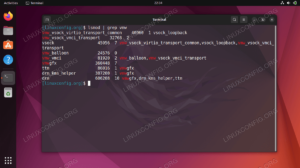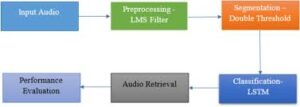
Machine learning audio fingerprinting is a powerful tool that helps computers recognize and identify sounds. This technology can find the same song or audio clip even if it’s played in different ways or has some noise. It’s like how we remember people’s voices even if they sound a little different each time we hear them.
In this blog post, we’ll explore how machine learning audio fingerprinting works and why it’s so important. From music apps to security systems, this technology is everywhere, making our lives easier and more fun. Let’s dive into the amazing world of audio recognition and discover how it can transform the way we interact with sound!
What is Machine Learning Audio Fingerprinting?

Machine learning audio fingerprinting is a technology that helps computers recognize sounds, just like how we can remember and recognize our favorite songs. Imagine you hear a song on the radio. Even if it’s playing softly or has some background noise, this technology can still identify it.
This technology works by creating a unique “fingerprint” for each audio clip. It’s like a special code that tells the computer what the sound is. This way, even if the audio is changed a little, the computer can still figure out what it is. It’s like how you can still recognize a friend’s face even if they’re wearing different clothes.
With machine learning, this fingerprinting gets even better. The computer learns from lots of different sounds and gets better at recognizing them. It’s a bit like practicing a sport: the more you practice, the better you get. This helps the computer become really good at identifying all kinds of sounds.
How Does Machine Learning Audio Fingerprinting Work?
Machine learning audio fingerprinting works by analyzing the unique parts of an audio clip to create a special code. This code is like a fingerprint for the sound. When the computer hears the sound again, it checks the code to see if it matches any it knows.
First, the computer breaks down the sound into small pieces. Each piece is analyzed to find its unique features, like how different parts of a song sound. Then, these features are turned into a code. This code is stored in a database so the computer can use it to recognize the sound later.
When you play a song or any audio clip, the computer quickly creates a new code from it. It then compares this new code with the ones in the database. If it finds a match, it knows exactly what the sound is. This process happens very quickly, so you get results almost instantly.
The Basics of Audio Fingerprints and Machine Learning
The basics of audio fingerprints involve creating a unique code for each sound. This code, or fingerprint, helps computers recognize and identify the sound later. It’s like giving each song or audio clip its own special ID.
To create these fingerprints, the computer looks at various features of the sound. This includes things like pitch, rhythm, and tone. These features are turned into a code that’s unique to each sound. When the sound is played again, the computer checks this code to see if it matches any it knows.
Machine learning improves this process by allowing the computer to learn from many different sounds. As it learns, it gets better at recognizing different types of sounds. This means that even if the sound is changed a little, like having some background noise, the computer can still identify it.
Why Machine Learning Audio Fingerprinting is Important
Machine learning audio fingerprinting is important because it helps us recognize and find sounds quickly and accurately. For example, if you hear a song on the radio and want to know its name, this technology can help you find it almost instantly.
This technology is used in many areas, such as music apps, security systems, and even in movies. In music apps, it helps you identify songs that are playing in the background. In security systems, it can help detect specific sounds or alarms to keep people safe.
Machine learning makes audio fingerprinting even more powerful. It helps computers learn from lots of different sounds, so they get better at recognizing and identifying them. This means that the technology works better and faster, making it more useful for everyday tasks.
Common Uses for Machine Learning Audio Fingerprinting
Machine learning audio fingerprinting is used in many different ways in our daily lives. One common use is in music apps. When you hear a song on the radio and want to know what it is, these apps use this technology to find it for you.
Another common use is in security systems. For example, if an alarm goes off, the system can use audio fingerprinting to identify the type of alarm and respond quickly. This helps keep people safe by making sure the right action is taken.
This technology is also used in movie and TV show production. It can help identify and track audio clips to ensure they are used correctly. This is important for making sure that all the audio in a film or show matches up perfectly with the visuals.
How Machine Learning Enhances Audio Fingerprinting
Machine learning makes audio fingerprinting even better by teaching computers to recognize sounds more accurately. This is done through a process called training, where the computer learns from lots of different audio clips.
First, the computer listens to many examples of sounds and learns what makes each one unique. It then uses this knowledge to create more accurate fingerprints for new sounds. This helps it recognize even tricky sounds that might be altered or mixed with other noises.
For instance, if a song is played with a different background noise, the machine learning model can still identify it because it has learned the important features of the song. This makes audio fingerprinting more reliable in real-world situations.
The Role of Databases in Audio Fingerprinting
Databases play a crucial role in machine learning audio fingerprinting by storing all the unique codes or fingerprints of sounds. These databases are like big libraries where the computer keeps track of all the different sounds it knows.
When a new sound is played, the computer creates a fingerprint and checks it against the ones stored in the database. If it finds a match, it knows exactly what the sound is. This helps the technology work quickly and accurately.
Maintaining a large and up-to-date database is important for good performance. The more sounds a database contains, the better the computer can recognize new sounds. This is why regular updates and expansions of the database are important.
Challenges in Machine Learning Audio Fingerprinting
Machine learning audio fingerprinting faces some challenges that can affect its performance. One challenge is handling noisy environments. Sounds mixed with background noise can be harder to recognize accurately.
Another challenge is dealing with changes in the sound, like different versions or edits. While machine learning improves recognition, some changes can still make it tricky for the technology to identify the sound correctly.
Computers also need a lot of data to learn from. If the database doesn’t have enough examples, the technology might not work as well. This means that building and maintaining large databases is crucial for good performance.
Future Trends in Machine Learning Audio Fingerprinting
The future of machine learning audio fingerprinting looks exciting with many new trends on the horizon. One trend is the use of more advanced machine learning techniques to improve sound recognition. These techniques can make the technology faster and more accurate.
Another trend is the integration of audio fingerprinting with other technologies, like voice assistants and smart home devices. This can help create more seamless and intuitive experiences for users.
Additionally, there is a focus on making audio fingerprinting more accessible. This means creating tools and platforms that allow more people to use and benefit from this technology, whether for personal or professional purposes.
Comparing Machine Learning Audio Fingerprinting to Other Methods
Machine learning audio fingerprinting is one way to recognize and identify sounds, but there are other methods as well. One common method is called audio hashing, which creates a unique code for each sound but doesn’t use machine learning.
Audio hashing is simpler and can work well for some applications. However, it may not be as accurate as machine learning audio fingerprinting, especially in noisy or complex environments. Machine learning adds an extra layer of sophistication by learning from lots of data.
Another method is spectral analysis, which looks at the different frequencies in a sound. This can be useful for some types of sound recognition but may not handle changes in the sound as well as machine learning.
Applications of Machine Learning Audio Fingerprinting in Music
Machine learning audio fingerprinting is widely used in the music industry to help with various tasks. One common application is in music recognition apps, where the technology identifies songs playing in the background.
These apps use machine learning to create fingerprints of songs and match them with a database of known tracks. This allows users to quickly find the name and artist of a song they hear on the radio or in a store.
Another application is in music libraries and streaming services. Machine learning helps organize and manage large collections of music by tagging and categorizing tracks based on their audio fingerprints. This makes it easier for users to find their favorite songs.
How Machine Learning Audio Fingerprinting Benefits Security Systems
Machine learning audio fingerprinting also benefits security systems by helping them detect and respond to specific sounds. For example, it can identify alarm sounds or other important alerts in a building.
When a security system hears a sound, it creates a fingerprint and checks it against a database of known alarms and alerts. If it matches, the system can take the appropriate action, like sending an alert or triggering a response.
This technology helps make security systems more reliable and responsive. By accurately identifying sounds, it ensures that the right actions are taken to protect people and property.
The Impact of Machine Learning Audio Fingerprinting on Entertainment
Machine learning audio fingerprinting has a significant impact on the entertainment industry. One way it does this is by improving the way audio content is managed and tracked.
For example, in film and television production, audio fingerprinting helps track and synchronize audio clips with visuals. This ensures that sound effects, dialogue, and music match perfectly with what’s happening on screen.
In video games, the technology can be used to create more immersive experiences. By recognizing and processing different sounds, it helps enhance the game’s audio environment and interactions.
Using Machine Learning Audio Fingerprinting for Educational Purposes
Machine learning audio fingerprinting can also be used for educational purposes. It helps students and researchers study and analyze different types of sounds in various fields.
For example, in music education, the technology can help students learn about different musical styles and genres by identifying and analyzing audio clips. It makes it easier to explore and understand various aspects of music.
In scientific research, machine learning audio fingerprinting can be used to study animal sounds, environmental noise, and other types of audio data. This helps researchers gather and analyze information more efficiently.
How to Get Started with Machine Learning Audio Fingerprinting

Getting started with machine learning audio fingerprinting involves a few key steps. First, you need to learn the basics of audio processing and machine learning. There are many online resources and courses that can help you understand these concepts.
Next, you can start experimenting with audio fingerprinting tools and libraries. Many open-source tools are available that allow you to create and test audio fingerprints. These tools often come with documentation and examples to help you get started.
Finally, you can practice by working on projects that use audio fingerprinting. This could involve building your own music recognition app or creating a system to analyze and manage audio data. By applying what you’ve learned, you can gain practical experience and improve your skills.
Machine Learning Audio Fingerprinting and Privacy Concerns
Machine learning audio fingerprinting raises some privacy concerns that are important to consider. One concern is that the technology could be used to track and monitor people without their consent.
For example, if audio fingerprinting is used in public spaces, it could potentially collect and analyze sounds without people knowing. This raises questions about how data is collected, stored, and used.
To address these concerns, it’s important to use machine learning audio fingerprinting responsibly and with respect for privacy. This means being transparent about data collection practices and ensuring that any data collected is used ethically.
Exploring the Technical Aspects of Machine Learning Audio Fingerprinting
Exploring the technical aspects of machine learning audio fingerprinting involves understanding how the technology works behind the scenes. This includes learning about audio feature extraction, fingerprint creation, and database management.
Audio feature extraction involves breaking down the sound into its key components, like pitch and rhythm. These features are then used to create a unique fingerprint for the sound. Understanding this process helps in designing more effective fingerprinting systems.
Database management is also crucial, as it involves storing and organizing the fingerprints so they can be easily accessed and compared. This includes ensuring that the database is large enough to handle a wide range of sounds.
Machine Learning Audio Fingerprinting in Mobile Apps
Machine learning audio fingerprinting is increasingly used in mobile apps to enhance user experiences. One popular application is in music identification apps, where users can find out the name of a song they hear by simply using their phone.
These apps use machine learning to analyze the audio from the phone’s microphone and match it with a database of known songs. This process happens quickly and accurately, providing users with instant results.
In addition to music identification, audio fingerprinting can be used in other mobile apps, such as language learning tools and games. It helps create interactive and engaging experiences by recognizing and processing different sounds.
The Evolution of Machine Learning Audio Fingerprinting
The evolution of machine learning audio fingerprinting has been marked by significant advancements in technology. Early methods of audio recognition were limited and less accurate compared to today’s standards.
With the development of machine learning, audio fingerprinting has become more sophisticated. Modern techniques allow for more precise sound recognition and better handling of noisy environments and sound variations.
Advancements in computational power and data processing have also contributed to the evolution of this technology. These improvements enable faster and more accurate recognition, making machine learning audio fingerprinting more effective.
Key Players in the Machine Learning Audio Fingerprinting Industry

The machine learning audio fingerprinting industry has several key players who contribute to its development and application. Companies like Shazam and SoundHound are well-known for their music identification apps, which use audio fingerprinting technology.
These companies invest in research and development to enhance their fingerprinting algorithms and databases. They also work on integrating their technology with other platforms and services to offer more features and better performance.
In addition to these companies, there are also research institutions and tech startups that contribute to the advancement of machine learning audio fingerprinting. Their work helps drive innovation and improve the technology.
Conclusion
Machine learning audio fingerprinting is a powerful technology that helps us recognize and track sounds with great accuracy. By using advanced computer techniques, it can identify music, alarms, and other noises even in noisy environments. This makes it really useful for music apps, security systems, and many other areas.
As technology keeps improving, machine learning audio fingerprinting will get even better at understanding and identifying sounds. This means we’ll have more accurate and helpful tools in our daily lives, making it easier to enjoy and manage the audio around us. It’s exciting to see how this technology will continue to grow and benefit us in the future!



